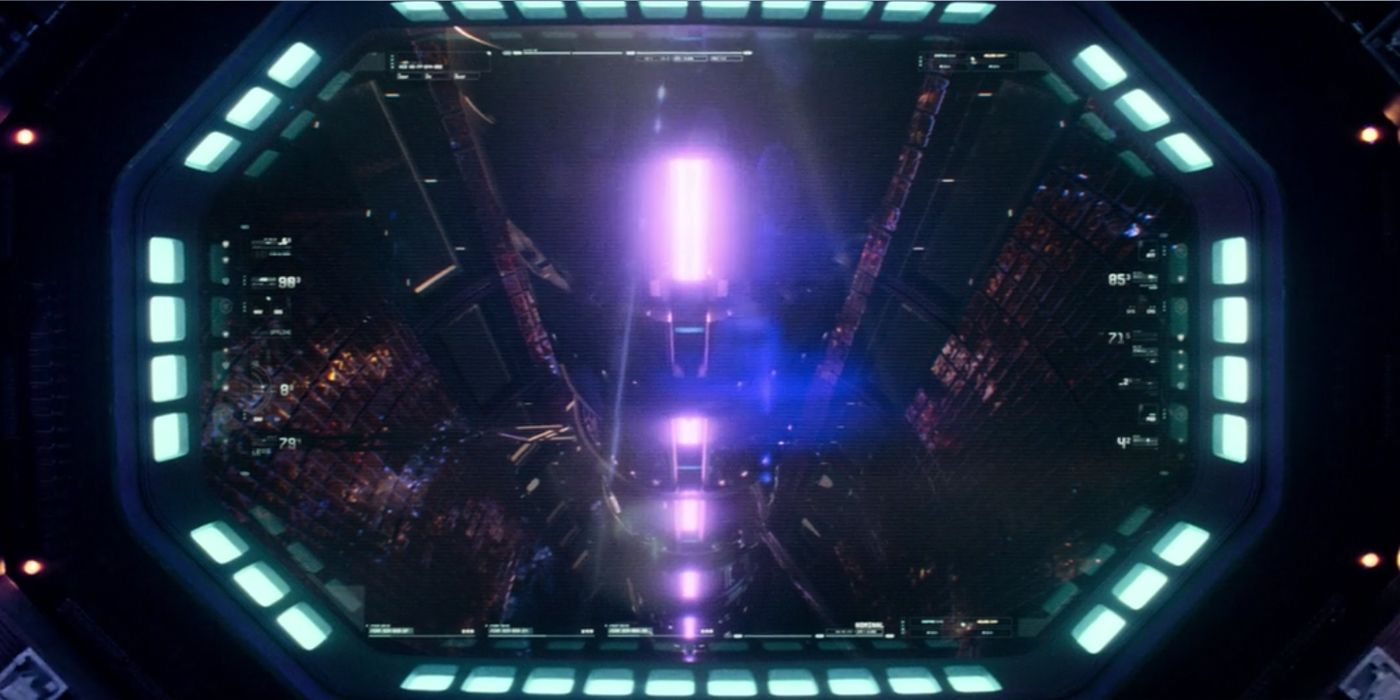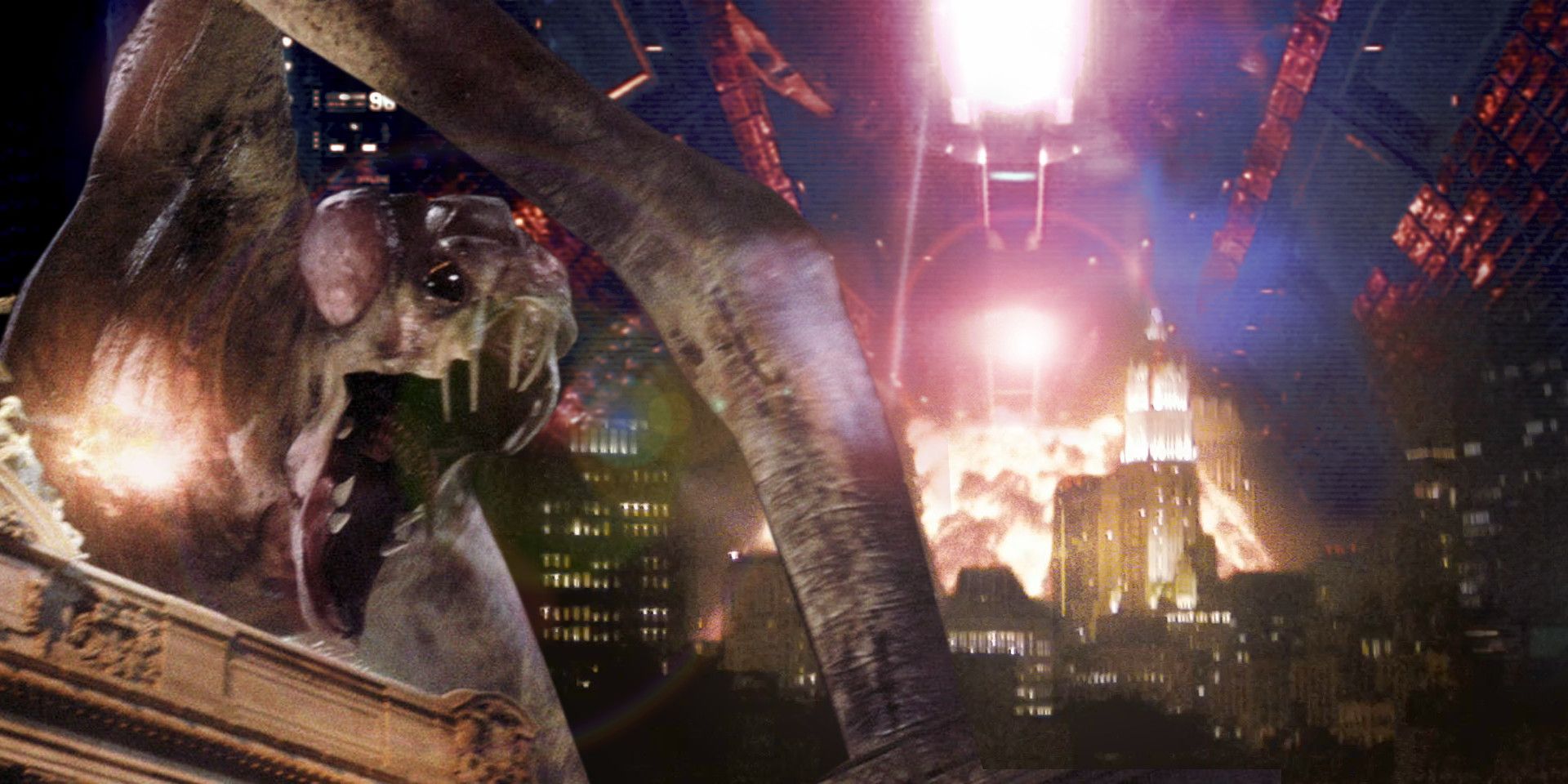The first Cloverfield movie's mysterious marketing campaign burst onto the scene in 2007, including the famous Alternate Reality Game, where fans were teased with mystery after mystery, setting them up for a movie that itself posed even more mysteries than answers. The exact same trend was continued a few years later with 10 Cloverfield Lane, which, to the dismay of some fans, didn't explain or reveal any new information about the original movie. In fact, Lane muddied the water even further, introducing an alien invasion, causing many to question whether these films even take place in the same reality.
Enter The Cloverfield Paradox. Originally titled God Particle, the movie was long rumored to be the next installment in the Cloverfield franchise, and once the ARG on tagruato.com started up again, fans knew it was the real deal. After a number of shifts to the release schedule, and rumors of some behind the scenes issues, the news came out that the then-untitled "Cloververse" movie was going to end up getting a release on Netflix. Following in the trend of shocking marketing and release practices, a trailer was released during the Superbowl revealing (as Screen Rant predicted), an immediate drop of the movie on the streaming service later that night.
Related: How All The Cloverfield Movies Connect
The trailer showed footage from the first movie before cutting to The Cloverfield Paradox, saying "10 years ago, some thing arrived. Now, Find out why." This is obviously teasing proper answers to the long-held questions about Cloverfield, questions not answered in Lane, namely "where did the monster come from?" The movie ultimately provided a roundabout explanation that could answer that question, but the clear suggestion of connectivity in the trailer (and some vagueness in Paradox) is leading fans to make some inaccurate assumptions about the relationship between the two movies - namely the idea that the two timelines sync up in some way. They don't.

Cloverfield Paradox's explanation for the Cloverfield monster's appearance is a misfiring of the Shepard space station's particle accelerator, resulting in multiple rifts in the space-time continuum. While that serves as sufficient enough of an explanation of the monster's origins, and possibly a number of other paranormal events throughout the Cloververse, that's all it is. The movies themselves don't take place at the same time, despite what the Superbowl trailer seemed to suggest.
Even so, a video has been making the rounds, showing a way the movies match up just past the 18 minute mark, where the Shepard's misfire in Paradox happens to coordinate with an explosion in Manhattan in Cloverfield, but just like the plethora of movies that sync up with Pink Floyd's 'Dark Side of the Moon,' this is merely a coincidence, and the incongruity is made clear by both the contents of the films themselves and details in the ARG marketing (J.J. Abrams also confirmed it was a coincidence in a Facebook Q&A).
Related: How The Cloverfield Paradox Sets Up Cloverfield 4
Simply paying attention to details like the technology in use in each film makes this fairly clear. Cell phone technology is always a dead giveaway when dating a movie, and there's a clear disparity between the flip phones of the first and the large touchscreen smartphone in Paradox. The first movie is also found footage from a camcorder using videotapes, a technology that was already nearly obsolete when Cloverfield was made. Any similar found footage from the technology available in The Cloverfield Paradox would be in the form of cell phone video clips. Some may dismiss that as a mere inconsistency in filmmaking, but the events of the ARG also set a clear date for Paradox as happening in 2028. That means it happens a full 20 years after the first movie and none of the events are actually happening in sync (that includes the falling satellite in Cloverfield that many are trying to tie to events in Paradox).
This also can't be explained away by saying the timeline was re-ordered by the Shepard misfire because even if some timeline wizardry could smash the two timelines together, the sync up is combining two totally unrelated events. The explosion being used from Cloverfield happens after the monster had already swum out of the ocean and past Ellis Island and the Statue of Liberty. The explosion is a consequence of the monster's attack, not it's creation or appearance, so the two events ultimately have nothing to do with each other. It's the equivalent to syncing gunfire from one to a character death in another and claiming the bullet traveled through space and time to kill someone in the other movie.
It's understandable that fans want to connect all the events of the franchise, especially when J.J. Abrams' mystery boxes are so, well, mysterious. The movie's (brief) marketing using synced up footage and promising a reveal of the monster's origins doesn't help matters. While thy synced trailer footage was definitely misleading, the promise was still fulfilled. The particle accelerator opened tears in the multiverse and allowed previously distinct realities to bleed into each other. This is the one element that actually ties the movies together, with all others being mere nods or similarities, while the timelines remain decades apart.
NEXT: The Cloverfield Paradox Ending Explained
Source:gamerant.com